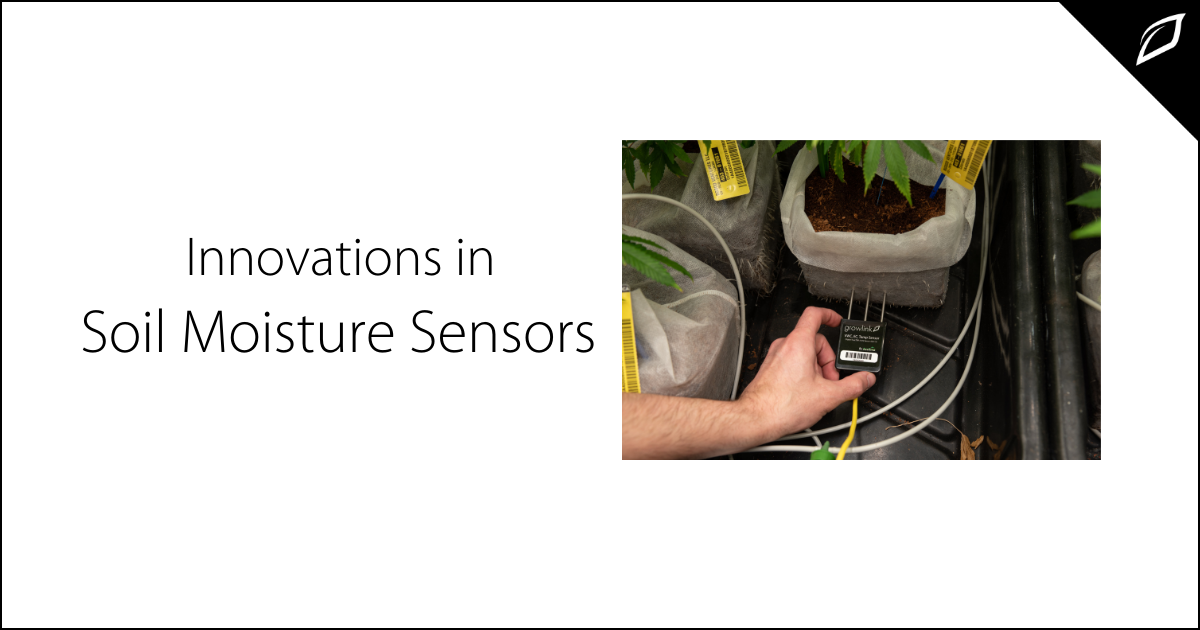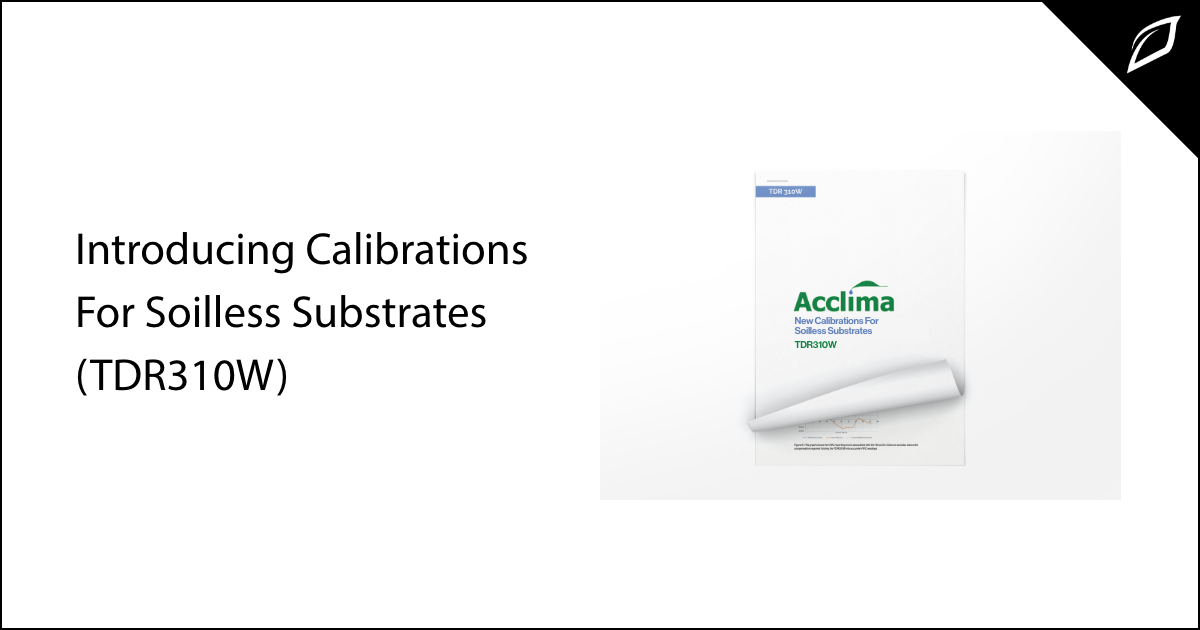Substrate Moisture Sensors
Agricultural technology constantly evolves by refining processes, upgrading systems, and improving hardware and software. Substrates, the medium your...

For decades, growers have used technology to predict and increase yields. Grow software, sensors, controllers, data analytics, and fertigation help manage greenhouse and indoor grow climate and irrigation. As with any industry, technology constantly evolves by refining processes, upgrading systems, and improving hardware and software.
Monitoring temperature, electrical conductivity, and volumetric water content in your soil or substrate were much more challenging in the past. But recent upgrades to the quality of soil moisture sensors have changed the game. Let's look at recent innovations in substrate or soil moisture sensors.
What is a substrate moisture sensor?
A substrate or soil moisture sensor typically uses metal probes with sensors inserted into the root zone of crops to measure temperature, VWC, and EC in real-time. It's typically connected to the irrigation or fertigation system in the root zone. Before triggering an irrigation event, the sensor provides critical data to determine whether to feed plants or not based on defined setpoints and the type of system being used.
Advances in Technology
One man has revolutionized soil moisture sensor technology, Scott Anderson of Acclima, Inc. Scott left a successful, 30-year career at Hewlett Packard, took his Master's degree in electrical engineering, and founded Acclima, Inc. in 2001.
Looking for an effective way to precisely control the application of irrigation water, Scott realized how significant it would be to farmers. Acclima holds eleven patents, with the TDT and TDR award-winning soil moisture sensors. Many failed attempts, over 30 before, helped them dial in the perfect method.
Scott developed the soil water content sensors gaining international recognition as the leading example in soil monitoring and control. Acclima has saved farmers millions in irrigation and fertilization costs without negatively impacting production.
The United States Department of Agriculture (USDA) participates in cooperative research and development with Acclima to pioneer new advancements in agriculture.
To fully appreciate why the new TDR soil moisture sensor is superior to the industry standard capacitance sensor, read Scott's full white paper here.
Perfect Results, Every time
Researchers submerged two types of sensors in water to compare the accuracy of each sensor. In this study, researchers compared the capacitance sensor to the TDR sensor.
The sensors were submerged in water; thus, VWC should always be 100%. As the salinity of the solution increases, so does EC, the accuracy of the capacitance sensor declines precipitously. In contrast, the TDR sensor accurately reports VWC despite the increase in EC.
A significant drawback of capacitance-based sensors is that the electrical conductivity of the soil throws off the capacitance measurements. The electrical conductivity of soil is also referred to as the salinity content of the soil. Nutrient solutions have a high salinity content, creating inaccurate readings in capacitance sensors. The higher the salinity levels, the less accurate the VWC measurements become. See graphics here.
TDR stands for "Time-Domain Reflectometry" and is a far superior technology for measuring water content. One of the most significant benefits of the TDR sensor is that propagation time is independent of the electrical conductivity of the substrate. This means that TDR sensors report the actual volumetric water content independent of soil electrical conductivity.
Bottom Line
There's a fair amount of misinformation online about the accuracy of capacitance sensors. Be sure you're looking at reliable data. We found several articles clearly sponsored by makers of capacitance sensors that were inaccurate and misleading. Do your research; reading is good for you! Plus, you'll be able to make an informed decision.


Agricultural technology constantly evolves by refining processes, upgrading systems, and improving hardware and software. Substrates, the medium your...

Innovator: Scott Anderson When Scott Anderson's Great Grandparents settled the land that is now Bear River City, the rugged pioneers from Sweden...

Growlink is pleased to announce a new Soilless Substrate Calibration, providing even more accurate VWC and EC data.